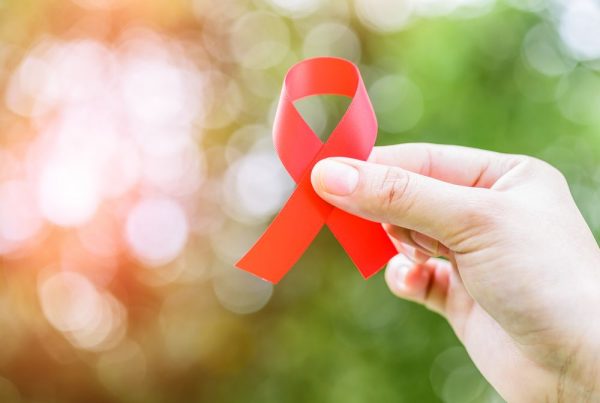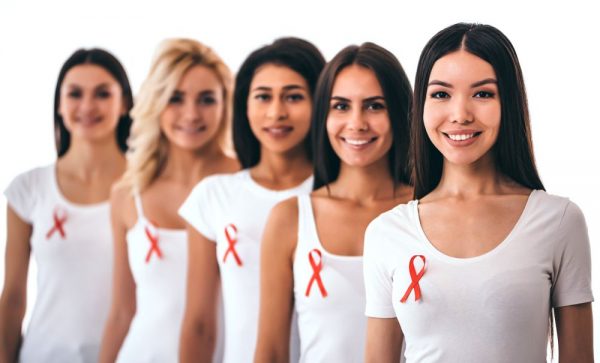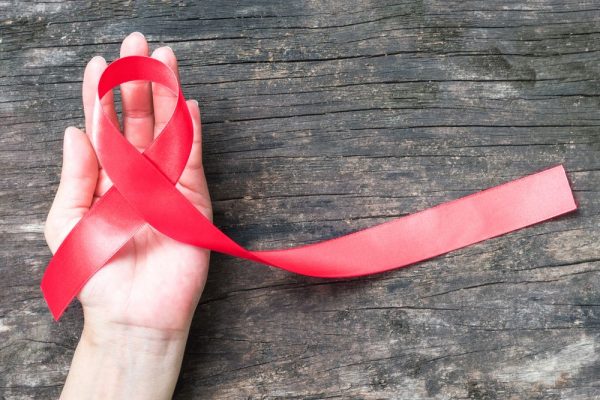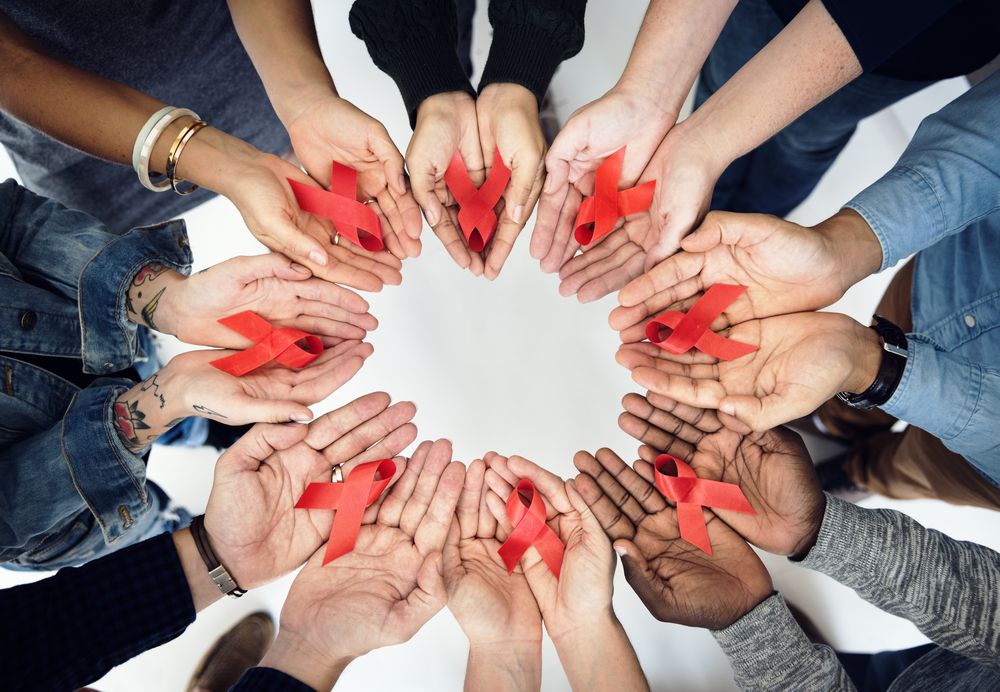Last Updated on 18th August 2021 by Charlie Walsh
AIDs has reportedly been around since the 1920’s. However, acquired immune deficiency syndrome was first recognised in 1982 after a series of unusual deaths. When the AIDS epidemic first began in the 1980’s, almost all of the people diagnosed with the condition died. Whilst this is no longer the case, people around the world are still dying from the disease at an alarming rate.

What is AIDS?
Sometimes known as ‘the last stage of HIV,’ AIDS is a set of symptoms caused by the human immunodeficiency virus (HIV). A person is said to have contacted AIDS when their immune system is left too weak to fight off infection. A set of symptoms and illnesses make up AIDS which if left untreated, usually leads to death.
However, it is important to note that with the correct treatment, people living with HIV can live relatively normal lives. Therefore, it is important to have regular HIV and STI tests, especially if you have had unprotected sex. The government estimates that there may be up to 11,000 undiagnosed cases of HIV in the United Kingdom, which if left untreated, can lead to AIDS.
What are the symptoms of HIV and AIDS?
Symptoms of AIDS are caused by the deterioration of the immune system and the loss of the infection-fighting cells called the CD4 cells. As soon as HIV enters the body, the virus begins to destroy these cells.
Some common symptoms of HIV include:
• Long lasting diarrhoea (usually more than a week)
• Dry cough
• Memory loss, depression and neurological disorders
• Pneumonia
• Unexplained tiredness
• Rapid weight loss
• Recurring fever or night sweats
• Red, brown, pink or purplish blotches on or under the skin or inside the mouth, nose or eyelids.
• Swollen lymph glands in the armpits, groin or neck
• White spots or unusual blemishes on the tongue, mouth or throat

AIDS usually occurs when a series of opportunistic infections take advantage of the hosts weakened immune system. These infections are unable to affect a healthy person, but are able to take advantage the weakened immunity of someone with HIV. As soon as HIV enters the body, it sets about attacking the CD4 cells which are key cells in the fight against infection.
Symptoms of opportunistic infections common with AIDS include the following. However, this list is not exhaustive:
• Coughing and shortness of breath
• Difficulty swallowing
• Extreme, unexplained fatigue
• Fever
• Neurological symptoms such as confusion and forgetfulness
• Nausea, stomach cramps and vomiting
• Seizures and lack of coordination
• Severe, persistent diarrhoea
• Severe headaches
• Vision loss
• Weight loss
According to UNAIDS, there were approximately 36.9 million people worldwide living with HIV/AIDS last year. Of these, 1.8 million people were under the age of fifteen. The organisation also estimated that 1.8 million individuals worldwide became newly infected with HIV in 2017. This equates to approximately 5,000 new infections every day, and it is simply unacceptable.
World AIDS Day
If you’re as shocked as we are about these figures, there are things that you can do to help. AIDS is a disease that does not discriminate, everyone is at risk whether you are man, woman, child and whatever your sexuality. In the 1980’s, people were led to believe that HIV and AIDS only affected gay men and those who shared needles. It was misleading information such as this, which cost lives.
For those who want to help, World AIDS Day began in 1988 and was the world’s first ever global health day. Taking place on the 1st December every year, this aids awareness day seeks to unite the world in the fight against HIV and AIDS whilst also commemorating those who have lost their lives. The event also seeks to end stigma by inviting people to show their support of those living with the condition by wearing a red HIV awareness ribbon on the day.

Helping to end HIV and AIDS stigma
Elton John famously said that the biggest obstacle to curing HIV and AIDS was stigma. By this, he argues that the AIDS epidemic was fuelled by hate, misinformation, ignorance and indifference. By blaming homosexuals, people argue that their ‘immoral’ lives led to their untimely demise. However, since time has moved on, thankfully, many people know that this is certainly not the case. Since the AIDS epidemic began, around 30 million people have lost their lives, and despite incredible leaps in medication, this number is continuing to rise. I recently spoke to a man who was living with a HIV diagnosis. He lost friends, family and even work through his diagnosis. However, one of the turning points for him in the fight against HIV stigma was Princess Diana.
At a time when some medical professionals were refusing to serve meals to patients infected with HIV, Princess Diana broke boundaries in 1987 when she removed her gloves and took the hand of an AIDS patient. Today, this would hardly be considered remarkable. However, at a time of great fear, this act of compassion showed that HIV and AIDS could not be transmitted by touch. In short, Princess Diana used her public image to dispel the irrational fears that people had about the virus. She also showed that love and acceptance was the way to end the fight against this deadly virus.
‘How can I help?’ I hear you ask, ‘I am hardly Princess Diana!’
This is true. However, by showing love and acceptance to those living with HIV and AIDS, we are telling people that it is okay to talk about their diagnosis. A person’s HIV status is absolutely their business. However, those who do want to share it should feel able to do so without stigma and hate. The more people that we have talking about HIV and AIDS, the better we are to educate ourselves about the virus, the ways that we can prevent the spread of the virus and the different types of medication and treatments available.
On World AIDS Day, please wear your red ribbon with pride and let’s join together to show acceptance and love to those living with AIDS. After all, what better way to end shame, than with love.
End the spread of HIV
Scientific advances mean that those with HIV can lead relatively normal lives, and on the right medication, won’t pass the virus on to anyone else. However, these treatments can be expensive to those in countries where treatment has to be self-funded. By donating to World AIDS Day, you can help towards the cost of funding of new treatments and support those who are living with AIDS.










